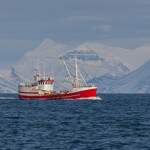EU fishing fleet losing profitability in 2022

A sharp increase in energy costs and inflation in 2022 will result in E.U. fisheries struggling to maintain profits, and the fleet could end 2022 in a loss-making position, according to the “2022 Annual Economic Report on the E.U. Fishing Fleet” published by the European Commission Scientific, Technical, and Economic Committee for Fisheries (STECF).
STECF’s projection doesn’t consider E.U. financial support and the national state aid that could be provided to mitigate the socio-economic impacts of rising energy prices and inflation.
The committee’s results for thus far in 2022 find that compared with 2020, the analysis’ main reported year, there has been a 17 percent decline in the landed weight of the fleet’s total catch. Factoring in 20 percent higher average prices, it calculates a 1.6 percent decrease in the total value of landings.
Revenues in 2022 are expected to be similar to 2020, but the fleet has seen a 175 percent increase in fuel costs this year. Consequently, it is expected to have its profitability “severely” reduced in gross and net terms, with negative margins in both for the first time in the past 10 years, the report said.
The report states that the Russian invasion of Ukraine has led to significantly higher fuel prices. By July 2022, fuel prices had risen to almost double those of 2021, leading to increased operational costs, it said.
In pre-conflict 2020, with E.U. fisheries impacted by the COVID-19 pandemic and Brexit, the E.U. fishing fleet totaled 73,716 vessels. Based on data submitted by member states, there were 56,111 active vessels, offering direct employment to 124,636 fishers. This corresponded to the equivalent full-time employment level of 82,272.
Greece had the E.U.’s largest fleet, with 19 percent of the total number of vessels, followed by Italy (16.2 percent), and Spain (12.1 percent). With 67 vessels (63 of which were active in 2020), Belgium had the bloc’s smallest fleet.
Overall, the E.U. fleet spent 5.3 million days at sea and consumed 1.9 billion liters of fuel to land 3.9 million metric tons (MT) of seafood with a reported worth of EUR 5.8 billion (USD 5.8 billion).
The catch value was down 12.5 percent compared with 2019, while volume was 2.7 percent lower.
Atlantic herring, with 556,113 MT caught, was the most-landed species, followed by sprats with 399,903 MT, and blue whiting with 299,426 MT. Hake was the highest valued catch at EUR 321 million (USD 322.1 million).
The fleet’s gross value-added (GVA) and gross profit (all excluding subsidies and fishing rights) in 2020 were estimated at EUR 3.3 billion (USD 3.3 billion) and EUR 1.16 billion (USD 1.16 billion), respectively. Total net profit was close to EUR 400 million (USD 395 million).
STECF’s report confirmed that while the E.U. fishing fleet remained profitable, its performance reduced slightly when compared with 2019, and that four of the 22 member-states evaluated generated net losses – Cyprus, Finland, Germany, and Estonia.
Photo courtesy of Rudmer Zwerver/Shutterstock






Share